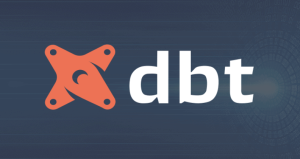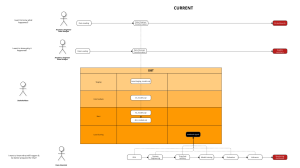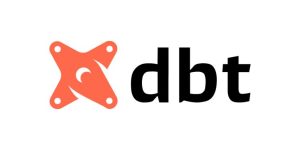Email is still the core mode of communication in our work and personal life for many of us. When I started with my career, dealing with email is not an issue since I did not get that many emails. However, they started coming in more and more, and I started wearing different hats in my life.
At one point, I started missing important tasks and forget details that I should have remembered. Our brain is terrible at keeping and organizing a lot of information. That is why many great productivity systems like GTD or Zettlekasten rely on capturing and organizing information off our brains.
Inbox Zero
That was when I stumbled on the concept of Inbox Zero. Managing a zero inbox is certainly much easier than a multi-thousand one. The core concept is that you strive to reduce your inboxes to zero every day or every week. When you get to zero, you are done for the day/week and will have all your emails organized.
Here are some steps that you can take to get you out of the email hell, hopefully.
1. Clear out your inbox
First of all, you have to do what seems to be the hardest step: getting started. Unsubscribe from every newsletter, notification, service that is not relevant to you. This might take a while, especially if you have signed up for many things over the years.
Next, archive all emails that are older than a week (or two). All email clients should have this function. Storing all your emails somewhere else can shift in mentality, especially if you are used to finding everything in your inbox. It certainly took a while for me to get used to the concept of finding old emails in the archive.
Many people use email for many things, from a to-do list, file storage, reminder to a trash can. Let’s be real; there are many tools out there that are better suited for those functions than doing everything with your inboxes. Let’s reserve email for its core function only, which is collecting inputs from different sources. Modern email clients have great integration with downstream applications that can take care of other functions for you.
2. Take action with your emails
For the remaining emails in your inbox, take some time to go through them one by one. For each email, there are four actions that you can take.
- If the email is not important to you, archive it immediately.
- If it takes you less than two minutes to read/reply to the email, do that now.
- If it takes more than two minutes to deal with an email, snooze it to a predetermined time to deal with them.
- Delegate and set a timer to check back if there is no reply by the deadline.
Snoozing means that the email is important to you, and you need some time to deal with it. For example, an email from your boss will take you time to craft a reply or a newsletter that takes time to digest. It can also be an email that is not important right away, and you can deal with it later, such as tomorrow, next week, or next month.
Many of the items you cannot do by themselves and have to delegate to others. For example, a task that you need your teams’ help on or an email to a company inquiring about a service. It is important to follow up on emails like this and make sure whatever you delegate is done and done on time.
3. Focus on what is important
Even though many of us don’t admit it, scientists have shown that we are terrible at multi-tasking, and emails don’t have either. We work best when we focus on one task and do not get distracted by emails about another thing.
That is why you should set aside time slots every day to tackle email. If you can afford it, once a day in the morning or the afternoon is enough. If not, you can set multiple timeslots a day. I usually check my email at the beginning and end of my mornings and afternoons.
The rest of the time? Turn off your notifications or email client! The same goes for other distractions, such as instant messaging, news app notifications, and app-push from random apps.
4. Stop writing the same email again
There is a principle in software engineering called DRY — do not repeat yourself. There are certain types of emails that we write again and again for our work and personal lives. Maybe it’s an introduction to your company or sending some expected documents. Whatever it is, it probably takes less time to write (or find and utilize) a template that you can use again that would most likely save you some time.
You can take 10 minutes to write or collect a bunch of email templates that will save you more time than what you will spend.
5. Use downstream applications to streamline your workflows
As mentioned above, we should only use email for one purpose, which is collecting input. However, often time you need more systems to deal with our complicated daily lives. Therefore, it is essential to have your email connected to downstream applications to streamline your workflow.
Four downstream systems can handle every email you received: a digital calendar, a task manager, a reference app, and a read later app.
If the email is about an event, a meeting, then it should go straight to the calendar app. If you need to do a task that does not relate to answering an email, it goes to the task manager app. Some examples can be getting a refund from a recent order or create a report for this quarter.
If an email is non-actionable, it should go to a reference app. For instance, some documents you can keep for later or something you need to note. Last but not least, if the email is something that needs to be read, you can use a read-later app. If all you consume directly comes from your email, you can get away using your email client for this purpose.
Choosing apps for these workflows is a matter of personal preference. You can use different apps for different workflow or find an app that fits multiple purposes.
6. Choose a great email client
A lot of what I mentioned would require a certain amount of manual work if your tool does not support it. However, as I said, many modern email clients can take care of most of these needs and give us email superpowers. Here is my list of personal must-have features in an email client.
- Connect to most email providers
- Can snooze email and set custom snooze times
- Have reminders to follow up if there’s no reply by a certain date
- Available on multi-platforms (web, mobile, desktop)
- Free, duh!
Here are some nice-to-have features:
- Can schedule to send an email later
- Can organize emails in smart buckets (personal, newsletter, notifications)
- Can reply with template
- Smart notification (notify on only important messages)
- Can delegate and track progress on email
- Have integrations with other popular services
If you use macOS, iOS, or Android, look no further than Spark. It is the single best email client out there, IMHO. You got all of the features listed above and much more. I have been using Spark for a couple of years now and am completely satisfied with it.
If you are on Windows, though, my best advice is to use the Gmail web app. Outlook is also much improved nowadays with many of the aforementioned features. You can look for add-ins or apps to enable some of the email superpowers above.
Takeaway
Daily email can be a hurdle to deal with if you don’t have a system. The Inbox Zero method saved me from the email hell.
Hopefully, it can save you some time too!
Written by Tuan Nguyen
- How to Deploy dbt to Production using GitHub Actions - August 23, 2021
- 6 Steps To Deal With Daily Email Hurdle - August 10, 2021
- 8 Tips to Greatly Enhance Your VSCode Productivity - August 10, 2021



